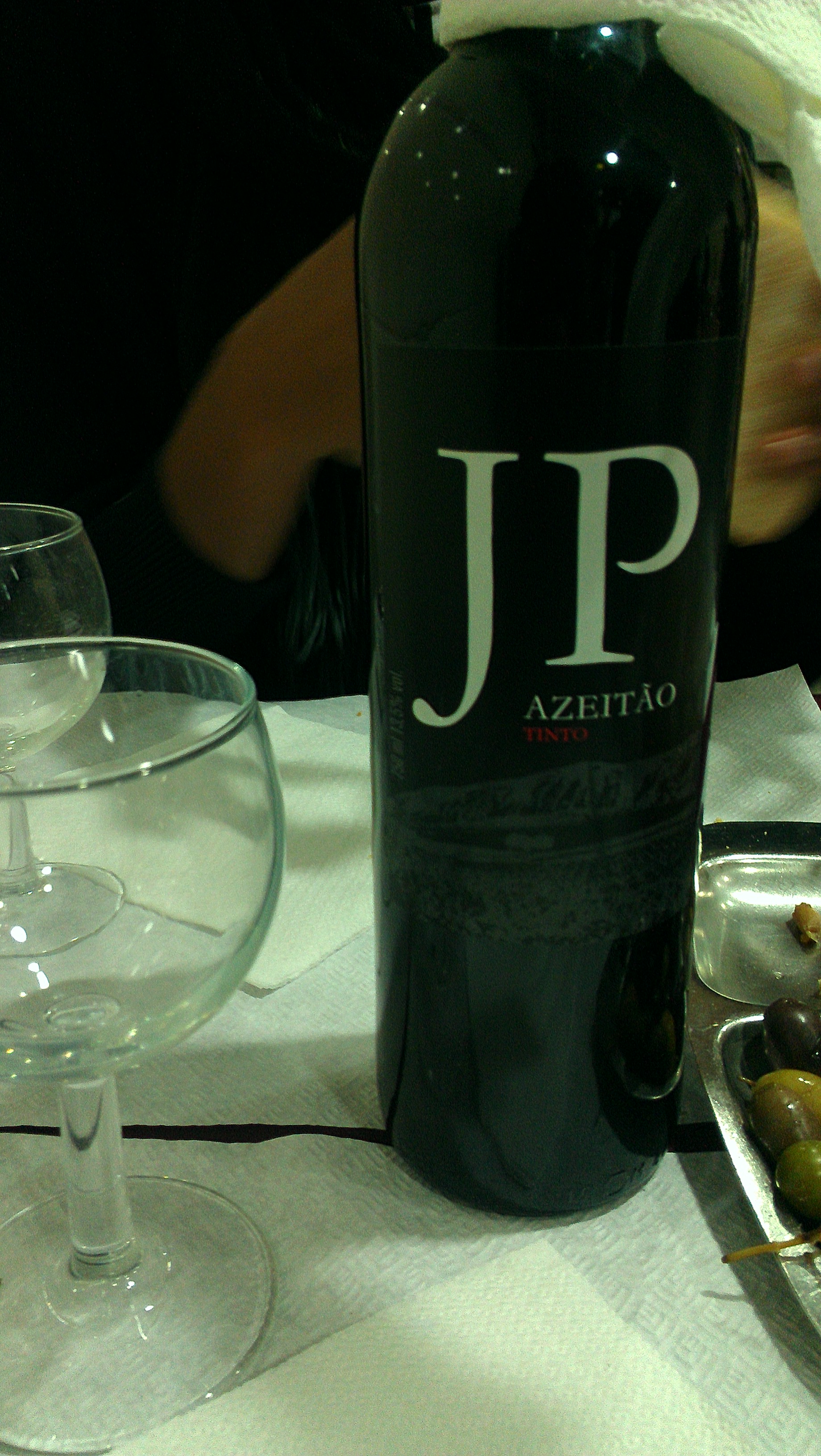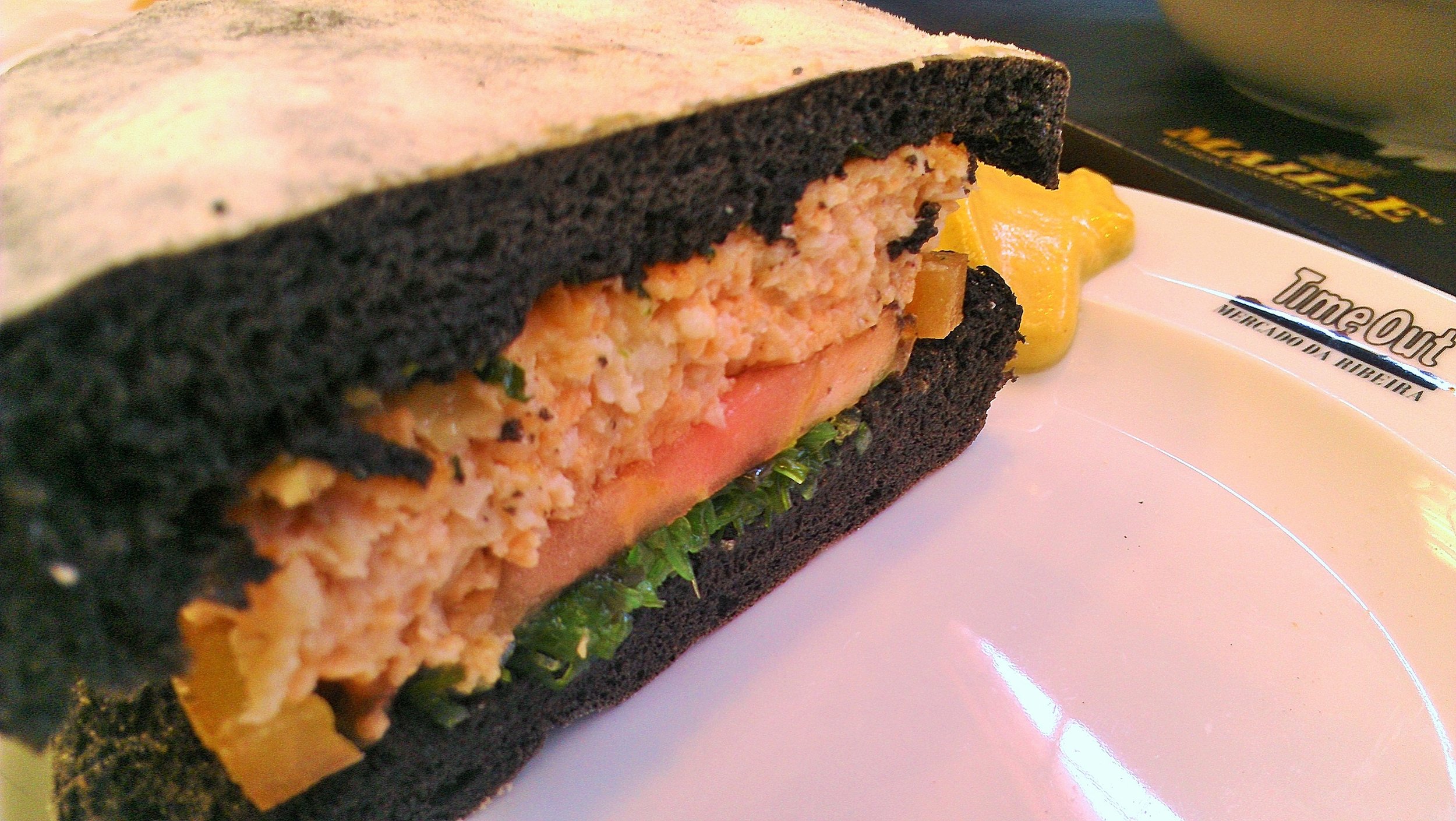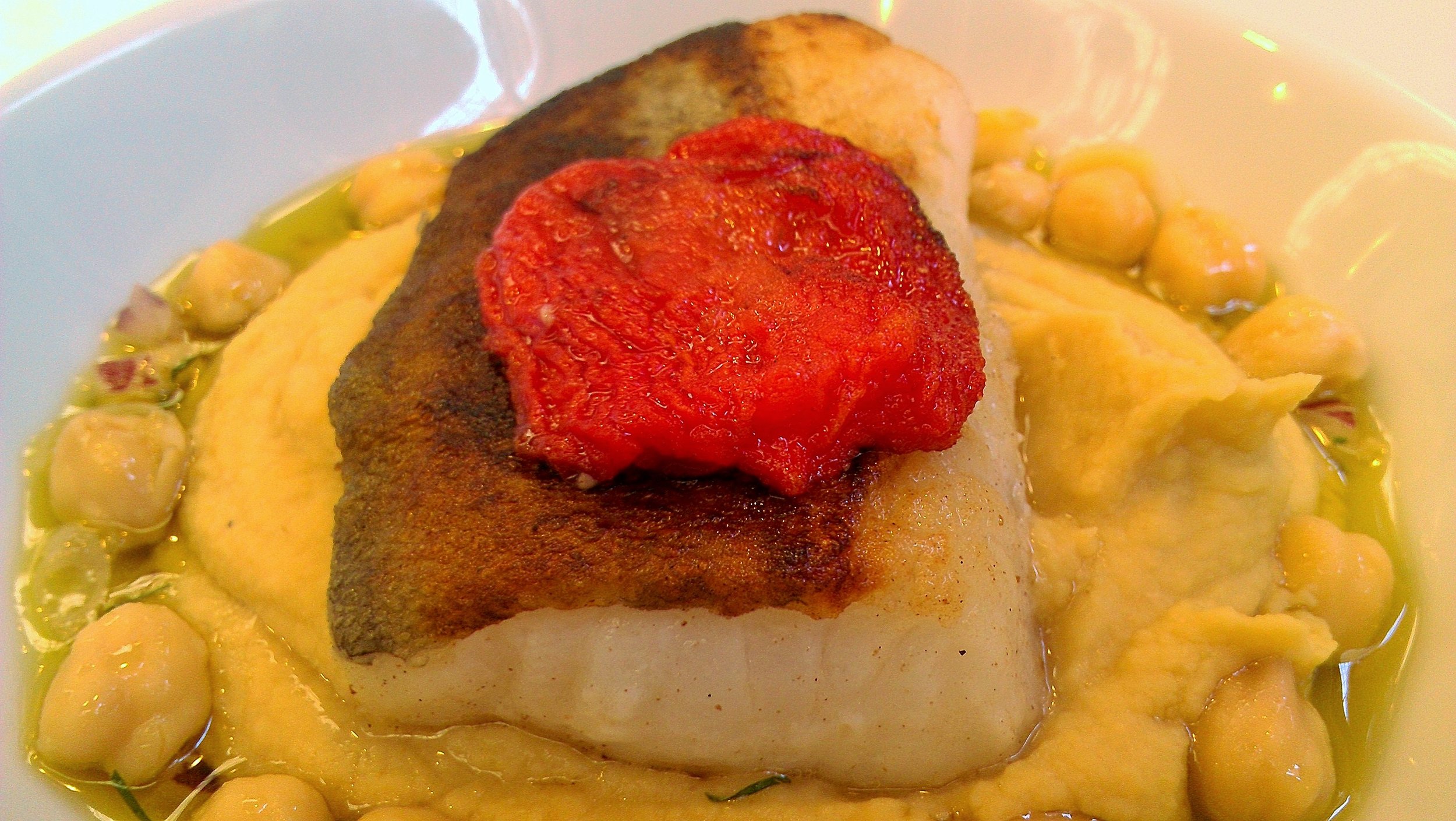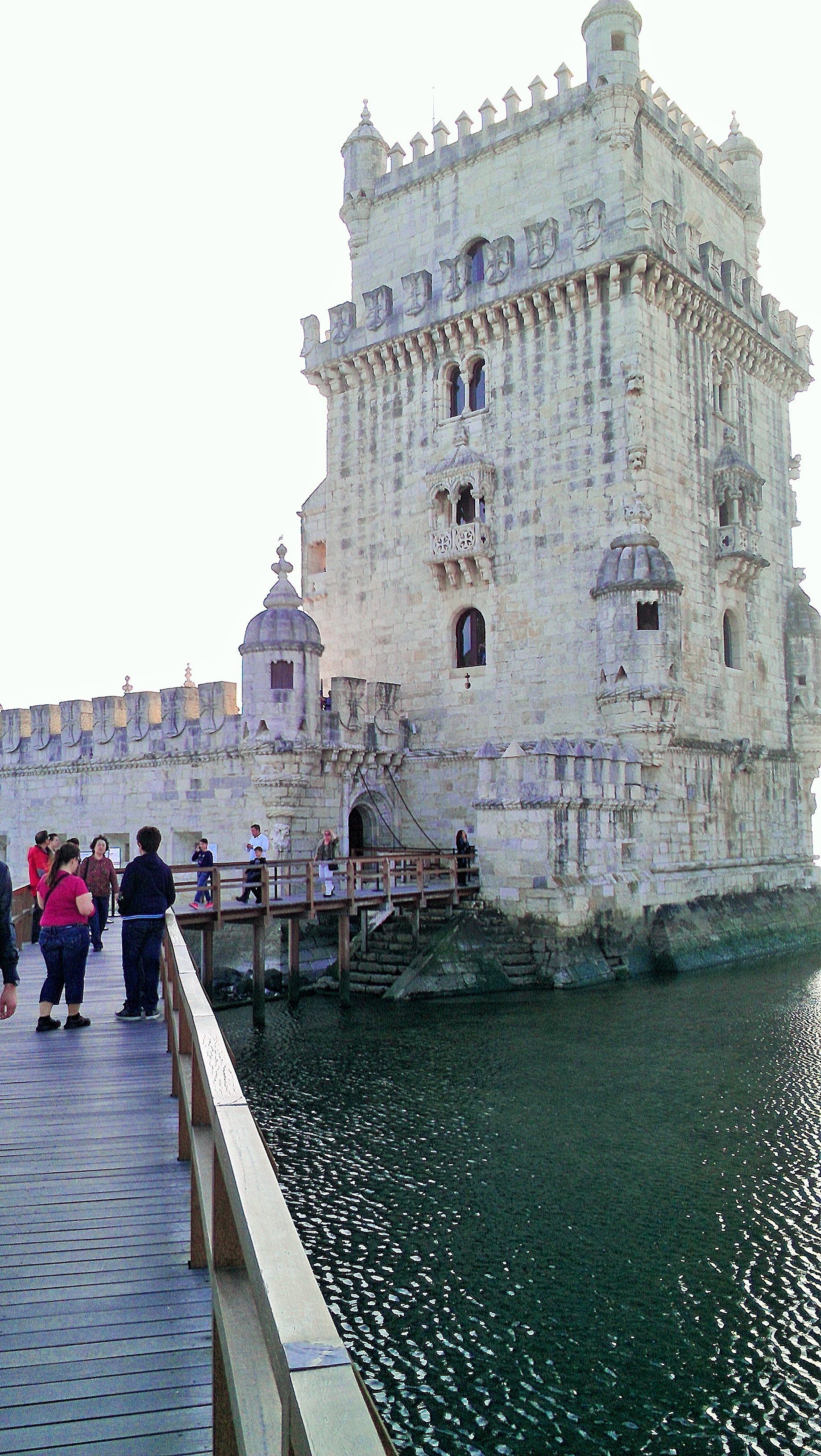(Photo journal) 6 Reasons Sitges Is The Perfect Destination For Just About Everyone
In case I haven't mentioned it already, Barcelona is one of my favorite cities on Earth. It’s cosmopolitan, chock full of culture, it has beaches, nightlife, great food and amazing history and architecture. It has so much to offer that it totally overshadows other neighboring cities and towns that are also worth exploring. One of those towns that I think definitely deserves to share in a little bit of Barna’s shine is Sitges. At just a 45 minute train away from Barcelona’s bustling Sants train station, Sitges is a jewel of a destination that has something to offer almost any type of traveler or pleasure seeker.
Don’t believe me? Here are 6 reasons why you (and just about everyone you know) should visit Sitges.
Sitges is for Lovers
Romantic passages, intimate restaurants, cozy boutique hotels, and sweeping Mediterranean views… even if you’re single and solo, you’re bound to feel a little more sexy here.
Sitges is for Families
Like the rest of Spain, families abound in restaurants, on the beaches Lots of family-friendly restaurants and activities and plenty of vacation rentals to house a crowd at better-than-hotel rates.
visit sitges travel families
Sitges is for 'the children'
No, not the little ones. I’m referring to the children of the LGBTQ family. Sitges isn’t just a gay-friendly vacation destination, it’s a gay vacationer’s paradise. It hosts the biggest and most popular gay pride festival in all of Spain every June. No shortage of bars, drag shows, and beeyoutiful boys to gaze at while walking in the streets, sitting in cafes, and lounging on the beaches!
visit-sitges-travel-spain2
Sitges is for wild women
Sprinkled all over the shoreline are these bold statues of nude women. And sprinkled along at least one of the beaches in Sitges are bold, nude humans. Sitges is a definitely a safe place for ladies who like to let it all hang out.
visit sitges-travel lady statue
Sitges is for the weary
The hustle and bustle of Barcelona is only a 40-minute ride away on the Rodalies commuter train. As much as I love visiting and partying in Barcelona, I have to admit that after a few days, I’m worn out. Sitges offers a close-by respite from the madness that is the big-city life of Barcelona.
visit sitges travel uni
Sitges is for the posh
High end shops, real estate, and world class restaurants make Sitges a favorite spot for the upper crust set, but you wouldn’t necessarily know it since everyone adopts a more casual, laid back vibe here.
How To Get There:
Trains from Barcelona to Sitges depart from França, Passeig de Gracia and Sants stations.
There's also a public bus that runs during the day, and a night bus that provides service between the Barcelona and Sitges until well after midnight.
Where to Stay:
Hotel Platjador is a quirky, but comfy boutique beachfront hotel smack in the middle of Sitges. Spring for the balcony suite for all-day people watching without having to leave your room.
What to Eat:
El Trull
visit sitges travel el trull
visit sitges-travel el trull
Directly across the street from Hotel Platjador is the oldest chiringuito in Spain (allegedly). Aptly named, El Chiringuito, its food is about as nondescript as its name. If you weren't lucky enough to score a balcony room at Hotel Platjador, Go to El Chiringuito, have a beer and people watch from there.
visit sitges travel platjador chiringuito
Have you been to Sitges yet? What did you love about it?
Why I Travel In Spain Mainly On The Train
exc
You ever been on a train that’s just moments away from pulling into your destination, so you get up from your seat, start gathering your things and begin moving towards the nearest exit. Then, suddenly you realize that the train doesn’t seem to be slowing down enough to make a stop. Slowly it dawns on you that the train isn’t slowing down, because it’s not going to stop. And as the train ever so slowly rolls past your destination station, and you stand dumbstruck in the middle of the aisle – your rolling bag clutched in one hand, your jacket draped over your other arm – your eyes and mouth widen while you watch your intended place fade away in the distance and you wonder to yourself,
What the f*ck just happened?
And then,
Where the f*ck am I headed to now?
spain train travel
No? Never happened to you? Oh.
Well…
You ever been on a train seated next to an old Spanish man, who, after almost refusing to move out of your assigned seat when you boarded, later lets out the mother of all silent-but-deadly farts that wakes you and the other guy in the seat across from you out of your naps, prompts a coughing fit from the passenger seated 3 rows back, gives you a (literal) taste of what the old man had for lunch and what medications he’s currently taking, and makes you wonder exactly how to say ‘Sir! Do not move another inch. Clap your cheeks down on that foul stench immediately!’ in Spanish without being misunderstood?
Yeah. Happened to me once. Never happened to you?
Well, then…
You ever been on a train with a silent car? A silent car that you specifically booked a seat in because things like loud talking, small children, and cell phone usage are strictly prohibited? A silent car that you’ve been dying to park yourself in so you can rest your hot, hungover head against the cool, cool window and snooze a bit on the way back to your little town after a long weekend of the most turnt-up of turn-ups (aka, Carnaval in Cadiz)? A silent car whose silence is being disturbed by, of all things, a nun…talking…on a cell phone? At first, you feel a little bad at getting angry at a nun. Is that even allowed? But then all those Catholic school punishments come back to you and you think to yourself, “Oh, hell naw, Sister Mary. The rules apply to you too.” But instead of saying anything, you simply scowl in her direction and not-so-subtly snap a picture of her with your phone hoping that the power of shame will compel her.
spain train travel
Still no? Damn, you should get out more.
Or… maybe I should stay put more.
But, it’s hard to stay put when I have this amazingly efficient and wide-reaching network of sleek chariots on iron rails to take me almost anywhere I can think of going in this country. As an American, I am not used to this type of convenience. Our national rail system is more of a quaint remnant of history than a currently viable utility. And the price of using the rail system in Spain is more than favorable. I often make use of Renfe’s SpainPass, a volume discount-type train ticket that’s only available to non-Spaniards. SpainPass allows you to take 4 or more medium- or long-distance train trips in a month for 40 euro or less per trip. Once I realized that with the money I make off of just a handful of private English lessons (link), I can afford to travel to 2 new cities each month, I was hooked. I’ve heard that Renfe has some pretty good student discounts, too. But, sadly (or gladly?), I aged out of those a long time ago. Even without discounts, many of the regular-price Renfe tickets are still in the 40 euro or less range, depending on the day and route of travel.
Of course there are so many other benefits to Spain train travel besides price. Trains offer:
More comfort and speed than a bus, and much less hassle than a plane
Less of the security hassle than at airports
Larger seats / more room
spain train travel
No luggage restrictions
The chance to see the country and the geography up-close while on the move
spain train travel
Free onboard entertainment (in the form of smelly old men, chatty nuns or in-transit movies)
So, Dear Reader, I encourage you to get out there more. Find a destination, buy a ticket, hop a train, and have an adventure.
Just remember to:
Always have your phone ready to snap a pic of a naughty nun
Always bring nose plugs or air spray in case of an unexpected abuelo ass-ault
Always know exactly where your train will be stopping, so you won’t inadvertently end up in Madrid having to buy another train ticket to get back to your intended destination.
5 of my favorite cities for street art
I am not one for museums when I travel. It’s not that I don’t like museums. It’s just that with limited time and lots of things to see and do on a trip, spending hours looking at old or odd things inside of a building doesn’t seem like the best time management strategy. Usually, I’ll save a museum visit for a second or third visit to a destination, or if I happen to stay in a single place for a long period of time.
Yet, even on a first trip or a short stay in a city, I like to get a feel for the culture and energy of the place – and viewing the work of local artists is a great way to do just that.
The Unexpected Value of Street Art
Street artists, in particular, often combine their art with a message that is highly relevant in their surroundings, their work can convey a sense of the politics of a particular area – what’s going on beneath the surface of the neighborhood or city you’re in. There’s also an ephemeral quality to street art that makes it more precious somehow. While a traditional work of art might show over and over again at a number of galleries, a piece of street art you see today may not be there tomorrow or next week.
Capturing street art – whether stumbling on works by accident or intentionally seeking them out – has led me down some of the most unexpected paths and into some of the best memories (and photos) during my travels.
Here are some of my favorite cities for capturing impressive works of street art:
London, England
Where to find street art in London:
About.com’s London street art walking tour (self-guided)
East London street art walk (self-guided)
Lisbon, Portugal
Where to find street art in Lisbon:
The Occasional Traveler’s Where to find street art in Lisbon
Cheeky Jaunt’s DIY Lisbon street art walk
Barcelona, Spain
Where to find street art in Barcelona:
15-euro Barcelona ‘history through graffiti’ walking tour
Malaga, Spain
Where to find street art in Málaga:
Berlin, Germany
Where to find street art in Berlin:
Original Free Alternative Berlin Tour
Are you a fan of street art? Where have you seen some great works of graffiti or street art during your travels?
Lisbon: 6 best things I ate
I really can’t say enough good things about Lisbon. It’s a city I love for many reasons, not the least of which is the delicious and inexpensive food that I ate while I was there. Here’s a rundown of the best food I ate in Lisbon:
Dorado dinner and wine at Cerqueira
A plate of fresh fried dorado steaks with all the fixings and a bottle of wine for under 10? Restaurant Cerqueira is worth the short but steep walk outside of the main tourist area of central Lisbon.
where-to-eat-lisbon-pena-cerqueira
Grilled sardines
The famed dish of Lisbon. I love fresh fish that’s simply prepared. These sardines were both fresh and simple, yet full of flavor.
Pastel de Belem
Seductively creamy, subtly sweet, surrounded by a light flaky pastry and topped with an angelic dusting of cinnamon. The pastel de Belem begs to be eaten with a strong cup of espresso. Who am I kidding? It begs to be eaten whenever, wherever and with whatever.
Salmon burger w/seaweed ‘slaw’ on choco ink bun
Once again, my love of fish was perfectly sated in Lisbon. At the Mercado da Ribeira this gourmet burger stand served up a grilled salmon patty on a bun tinted black with squid ink. Unbelievably good.
Bacalao w/garbanzo puree
There were so many gourmet and well-priced food options in the Mercado da Ribeira’s dining hall, that my travelmate and I decided to split one (the salmon burger), so we could both have two dishes. My second – this perfectly cooked cod filet over a warm garbanzo spread was as delightful to eat as it was to look at. I’m pretty sure I embarrassed myself slightly via my inappropriate moans while eating this dish.
how-to-do-lisbon-mercado-ribeira (3)
Bifana
Just before leaving Lisbon, I stopped by Café Beira Gare, which is rumored to serve the best bifana in Lisbon. This deceptively simple pork sandwich had my mouth watering for hours after. It’s best accompanied by a cold Portuguese beer.
how-to-do-lisbon-bifanas-sandwich
Have you eaten your way through Lisbon yet? What are some your best food finds in Lisbon?
how to do lisbon: learn how to say thank you in portuguese
I love the sound of Portuguese. As soon as I slid into my seat on the plane from Madrid to Lisbon, I couldn't help but smile. Portuguese swirled around me, sounding like a hybrid of Italian and Spanish spoken with lilting intonations that lulled me to calm.
Despite it being a big city, Lisbon's residents were never too busy to engage in a small bit of conversation, and always seemed quite friendly and willing to help - especially if you tried to speak even the smallest bit of Portuguese.

To show appreciation for their hospitality, the great food, perfect weather, and the affordability of it all - learning how to give a heartfelt thanks in Portugese was the least I could do.
Learn More Useful Portuguese Phrases
how to do lisbon: have a bifana
While the bifana didn't originate in Lisbon (that credit goes to the town of Vendas Novas), the snack is strongly associated with Portugal's capital city. The bifana consists of a juicy stack of thinly sliced pork layered on fresh, soft yet crusty bread. Sounds simple, but the unseen effort and just-right ingredients are what make this sandwich sublime.The pork is slow-simmered in a seasoned marinade. The bread is pillowy inside and just crackly enough outside. When the sandwich comes together, the juices from the meat seep into the bread, staining it with flavor. Served along with a helping of mustard that you can add as you please, the bifana is a deliciously indulgent snack that you can only experience in Portugal.

how to do lisbon: take a day trip to sintra or cascais
Two of Lisbon's most popular options for day trips are Cascais - a beach resort town - and Sintra - a historic village known for its old castles. Both cities are only about an hour away using Lisbon suburban rail line, Comboios. I chose to visit the quaint and charming Sintra and its majestically quirky storybook castle. There's an admission fee to enter the castle grounds and the castle's terraces - but I think it's worth it to get an up close look at such a colorful spectacle perched high among the clouds. Of course, you'll have to share the view with lots of other visitors and photo-snappers.
.jpg)
.jpg)
.jpg)

Exploring the town center with its lush gardens, outdoor art installations, and tiny shops and bars is a must either before or after visiting the castle.
.jpg)
.jpg)
.jpg)
If a leisurely day at the beach followed by gazing and shopping at cute boutiques is more up your alley, Cascais is the better option. But, why choose? If you have the time, visit both.
Lisbon to Sintra - How to Get There, What to See
Lisbon to Cascais - How to Get There, Where to Eat, What to See
how to do lisbon: see the monuments in belem
Belem - located in the southwest corner of Lisbon - is a perfect place to spend a leisurely, sunny afternoon. Some of the most iconic monuments of Lisbon are found here, namely The Jeronimo Monastery, The Monumento do Descubrimento, and the Torre de Belem.My advice is to take your time strolling through the area. Stop to people watch in the park in front of the Jeronimo Monastery. Soak up some sun at the edge of the river next to the Monumento de Descubrimento. Have a gelato before walking over to Belem Park and stretching out in the shade of a tree for a while.




Perhaps the most famous 'monument' in Belem is the beloved Portugese pastry, pastel de Belem. This creamy, custardy tart can be found all over Lisbon and throughout the rest of Portugal (where it goes by the name, pastel de nata), but its birthplace is Belem. Its best enjoyed with a liberal sprinkling of cinnamon on top. So good.

how to do lisbon: sample portugese cuisine at mercado da ribeira
I love myself a good market. And Lisbon has plenty to choose from. After reviewing a list of the best markets in Lisbon, I decided to try the Mercado da Ribeira - mainly because it offered both fresh foods and a selection of restaurants to eat in. I had no idea what I was in for when I arrived. The fresh food market was good, not great - even though I was able to score some okra (YAAY!!).

mercado da ribeira
.jpg)
fresh market
But the real draw at the Mercado da Ribeira is the jaw-dropping selection of gourmet restaurant and food stalls on the opposite side of the building. There were stalls offering asian noodles, gourmet burgers, whole roast pig, craft beer and cider, and several with updated takes on traditional Portugese cuisine. DO go here on an empty stomach. The quality and creativity of the offerings were top notch. The prices, however, were unbelievably reasonable.
.jpg)
roasted bacalao with garbanzo puree
.jpg)
salmon burger w/seaweed salad on squid ink bun
.jpg)
whole roast suckling pig
Diners sit at communal tables in the center of the market. Since the Mercado da Ribeira is a popular spot for locals and visitors, I found myself chatting - and even sharing a few bites - with diners from 3 different countries.
how to do lisbon: use the metro
The Lisbon metro is modern, efficient, and pretty easy to use. The only hiccup I experienced was when I first arrived at the airport and couldn't figure which direction to head in.
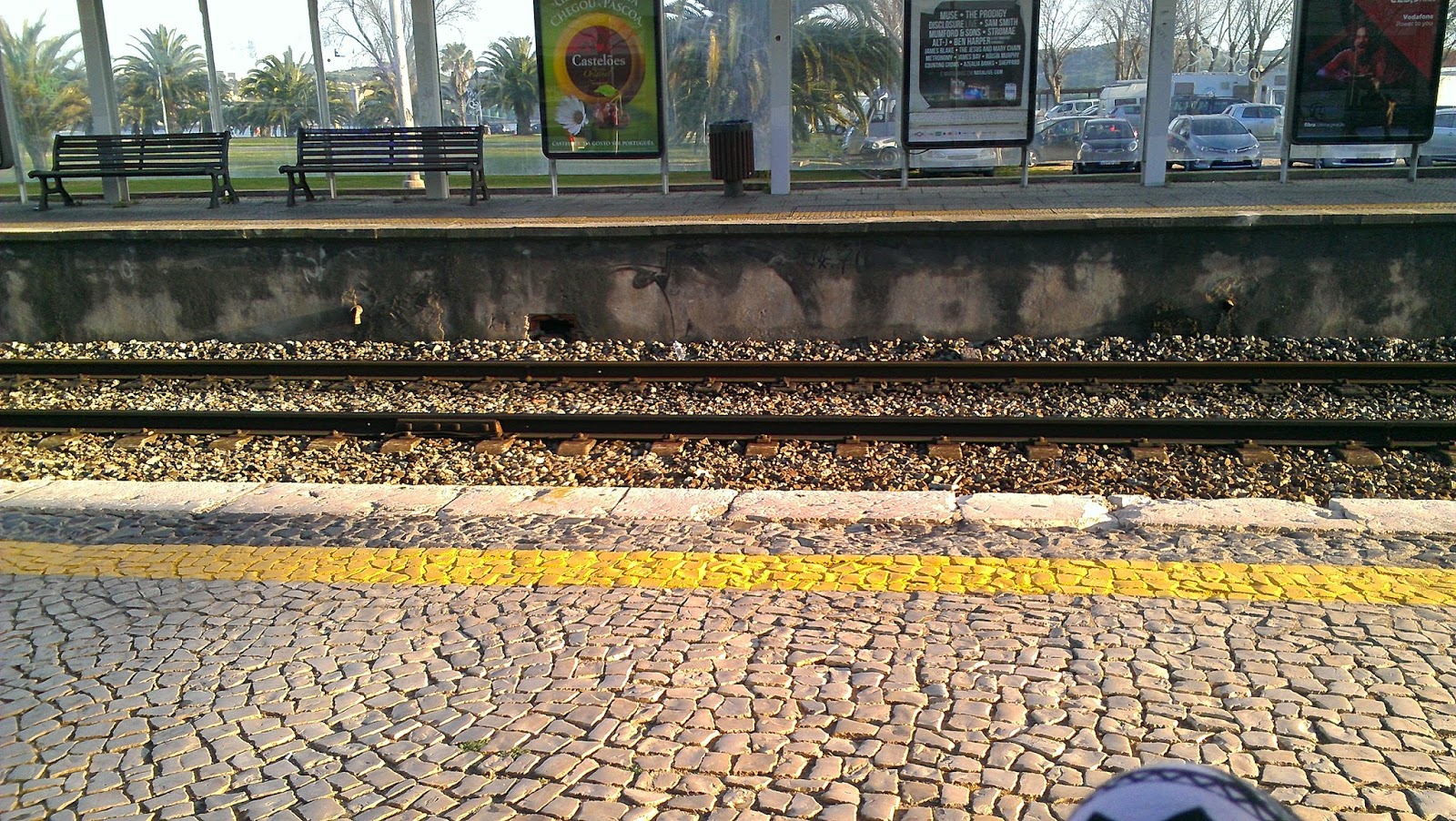
waiting on the Comboios suburban train from Belem to the city center
The metro goes to all of the neighborhoods and points of interest in central Lisbon. A reloadable, multi-trip card can be purchased and refilled at machines in every station. One of the best things about Lisbon's public transportation system is that you can use the same multi-trip card on the underground metro, above-ground trams, trolleys and buses, and the suburban trains that go all the way to Cascais and Sintra.
For long-distance destinations like Coimbra and Porto, you'll have to purchase a separate ticket for one of the regional or inter-regional trains that depart from Santa Apolonia Station.

regional train at Santa Apolonia Station in Lisbon
Official Lisbon Metro Site - Fares, Maps, and Trip Planner
Lisbon Comboios Site - for Medium to Long-Distance Trips Outside of Lisbon
how to do lisbon: people watch at the port
At the south end of Rua Augusta is the Port of Lisbon which overlooks the river Douro, and provides a spectacular view of the April 25 bridge. The large adjacent plaza and the riverside promenade produce an endless parade of locals, tourists, and street vendors. Grab a table on the terrace at one of the nearby cafes, or cop a squat on the wall ledge at the edge of the river to soak it all in.

port of lisbon

Once you've gotten your fill of gazing at the passersby, head up the Rua Augusta, browsing the shops and street performers, before heading over to have a look at the Santa Justa Elevator. Push on a little further, and you'll run into Rossio Square, with its picturesque fountains and always lively pedestrian scene. The nearby Rossio train station is worth a peek for its uniquely designed facade. A hint: It looks even better at night.

rua augusta

fountain - rossio square

santa justa elevator

rossio station
how to do lisbon: skip the #28 and explore alfama on foot
When researching things to do in Lisbon, I saw tons of recommendations for riding the #28 tram. While seeing the city's oldest neighborhood in this manner makes for a memorable experience, the tram is often literally overflowing with other tourists who also want to have this experience. I waited for 3 go-rounds of the #28, and was never able to get on because there wasn't even room to breathe on board. The way I see it, even if you do get a coveted spot on the tram, you're going to be packed in there like... well, like sardines. Not my idea of fun.
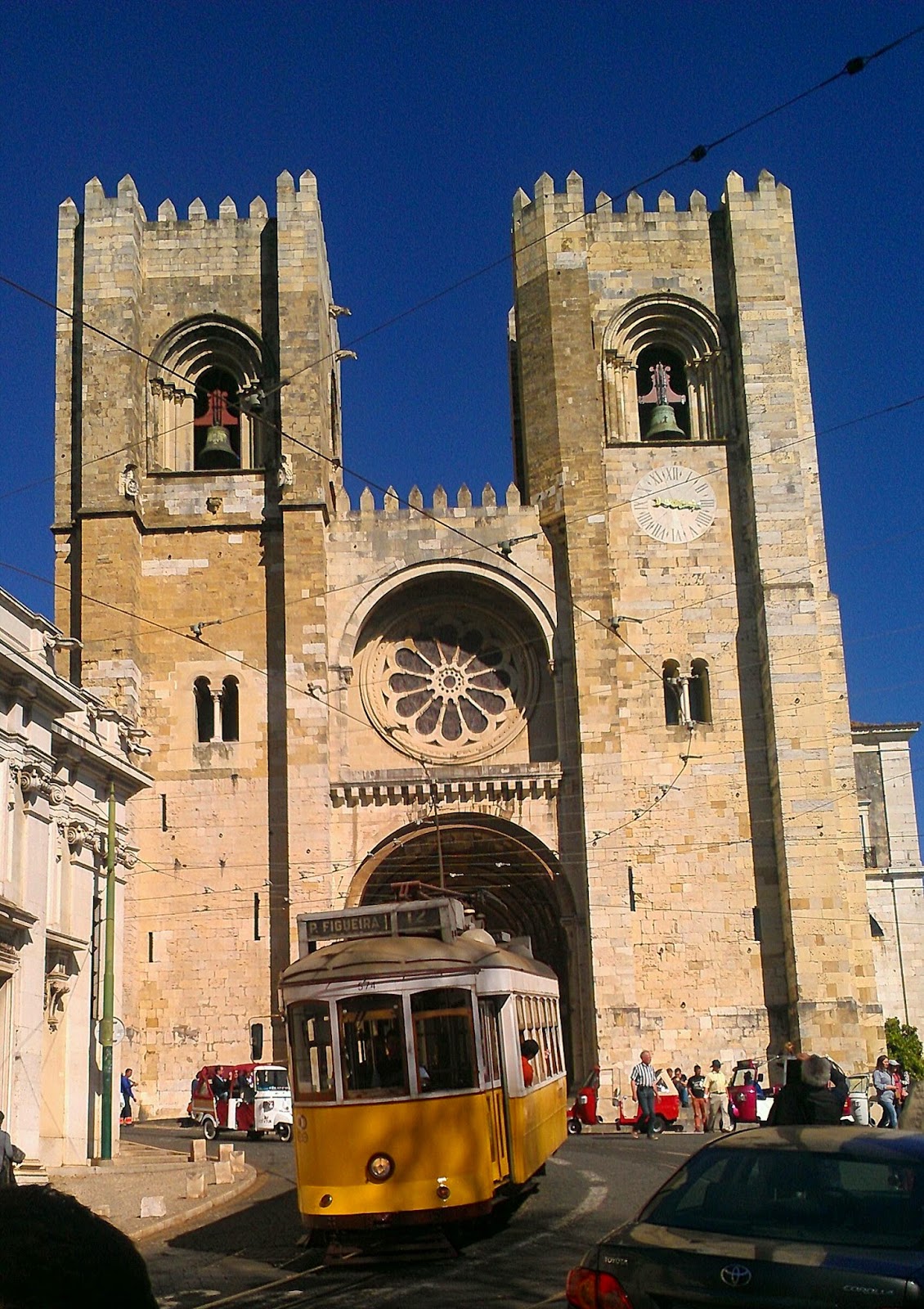
se de lisboa - lisbon cathedral
Though it's an uphill climb, making the trek from the Lisbon Cathedral (Se de Lisboa) up through the Alfama neighborhood is a treat for the senses. Cute shops, tiny traditional bars, crumbling buildings, winding staircases, and some fine street art will give you plenty of opportunities to stop for a look-see or a quick photo. It's the perfect place to get lost for a few hours. The best part is, you can take the #28 on your way back down - it's usually much less crowded going the opposite direction.
.jpg)
seeing the sights in alfama
.jpg)
overlooking lisbon from alfama
.jpg)
alfama street art
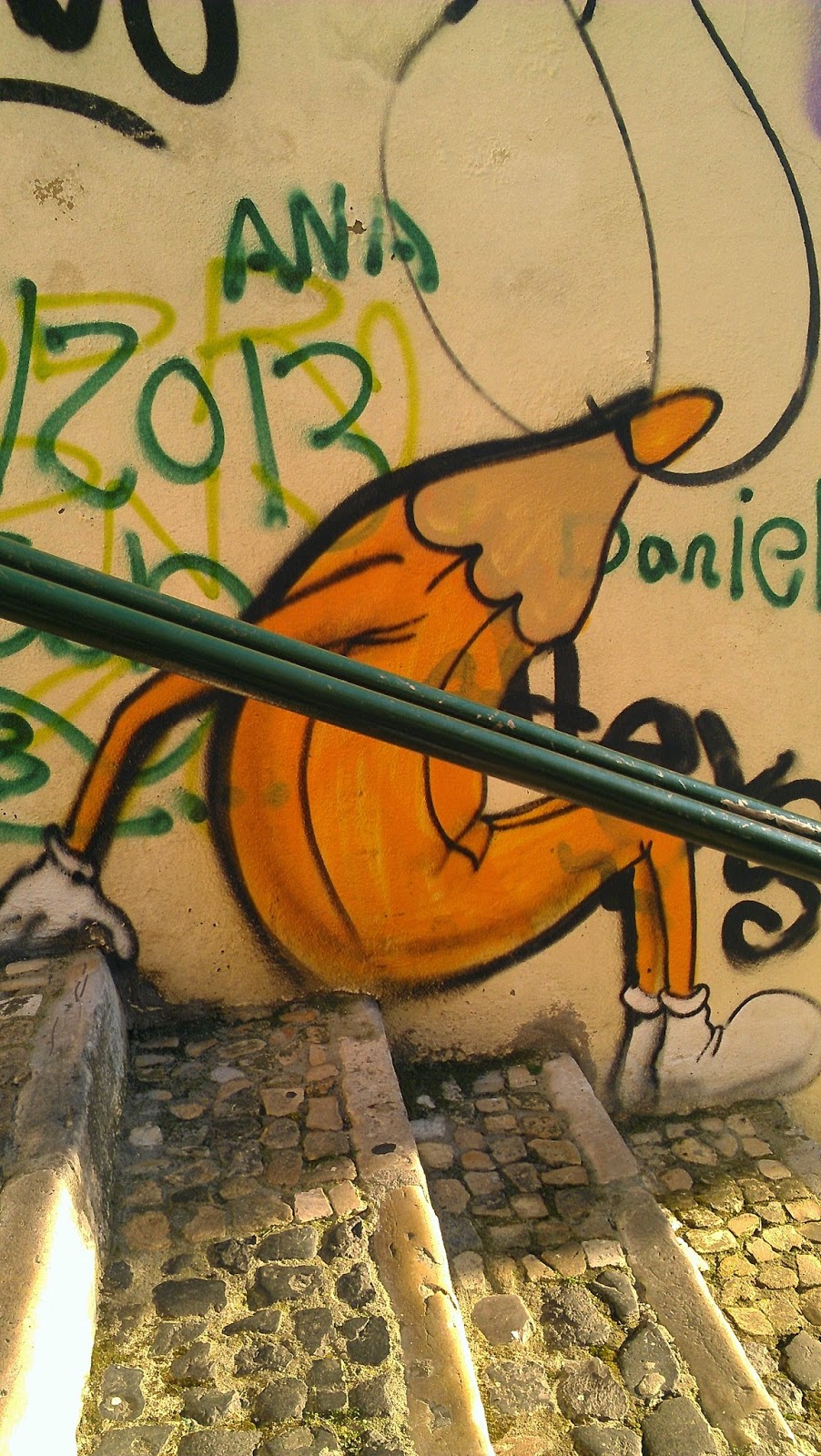
alfama street art

colorful alfama
how to do lisbon
Lisbon is one of those places where it’s hard to capture the beauty with a camera. You have to stop often, pause, and soak it all in. Let the breeze sweep over you, turn your face up to the sun, smile a bit to yourself and then push on up the next steep hill, over the buckling cobblestone sidewalks, down the time-worn stone stairs, and around the next bend, where you’ll spy something else that makes you stop in your tracks, exhale sharply, and pause to admire it all over again.

During my entire time there, I found myself repeating two words over and over: impressive, and picturesque. But there was also this feeling of welcoming ease. That is, unless I found myself in one of the heavily crowded, tourist-oriented areas of town. Even then, though, popping into a shop, I’d be met with a friendly bit of conversation, or be greeted with a familiar ‘bomdia nena’ as I passed one of the restaurant hawkers standing out in front of the rows of cafes, attempting to lure non-locals in for a slightly overpriced bite to eat.
Before I left to visit the city, more than one Spanish associate of mine had used the same word to describe Lisbon: decadente. Upon hearing the word, I’d wrinkle my brow a bit and wonder if I was heading to some place that would be characterized by overindulgence or questionable morality. After arriving, however, I realized that what my associates had intended was the definition of decadence that I’d all but forgotten – that being a place characterized by decay or decline, a place that is now a faded vision of its former glory.

one of Lisbon's many winding staircases

a peeling oled facade interplays with modern street art

urban decay never looked so good
Indeed, Lisbon is peppered with faded, dilapidated buildings, aged streets and sidewalks in need of repair, neglected and peeling facades, and a thin layer of grunge that seems to have lightly settled over almost everything. Yet, at the same time, the city manages to feel extremely modern and cosmopolitan. The efficient transportation system, the trendy shopping and bar districts, the amusing and provocative street art and performers, the cultural mishmash of colors, styles, nationalities, and cuisines you can see and smell as you stroll through the streets. Couple that with the fact that the city is located next to a huge river and not far from the Atlantic Ocean, and you get the sense of constant flow – an unhurried busy-ness that imparts energy that keeps the city renewed and young despite the obvious fact that it is so very, very old.

forever portugal

feelin' the love in lisbon
Over the next few days, I'll be sharing my insights on what to see and do in Lisbon . Here's a preview of what's to come:
how to do lisbon: eat grilled sardines
The abundance of fresh and expertly prepared fish in Lisbon made me one very happy girl. Grilled sardines is one of Lisbon's most iconic dishes, so if you're a fish lover, you have to experience it at least once.

grilled sardines served with typical accompaniments: potato and salad
how to do lisbon: take up residence in pena
Just a few minutes away from the hustle and bustle (and higher prices) of the city center is the Pena neighborhood of Lisbon. It's accessible by either:
a long walk up a steep hill,
a long walk up lots of old stairs, or
a brief ride on the Lavra funicular.
Either way, it's worth the trouble. Pena offers lodging options that strike the perfect balance of location, comfort and price. Staying here gives you a break from the busy-ness and lets you experience a more intimate side of the city. Friendly neighbors who smile and say good morning as you pass them on the street, and cheaper, less crowded restaurants are a part of the package.
Where I Stayed: NEW! 2patios&parking; center Lisbon

photo source:


Perfectly prepared caipirinha at
Terras Gerais, a cozy Brazilian restaurant in Pena
how to do valencia
What better thing to do on a long holiday weekend than visit and explore a new city? Desperate to escape the chilly early December weather of Spain's interior, I settled on Valencia. I'd already had a brief, enjoyable visit to the Costa Blanca, and I'd heard good things about the bigger city to the north. Without much of an itinerary at all, I set off on a Thursday for a 4-day excursion to Valencia.
How to Do Valencia: Stay With a Great AirBnB Host
No guide book or self-researched travel itinerary beats the hands-on help of a capable and compatible host. Luckily, I found both in Guillermo, my AirBnB host in Valencia. Not only did he meet me at the train station on arrival, he was kind enough to share his lunch with me after showing me the way to his flat.

Home-cooked lunch at Guillermo's
As we chatted over lunch, I learned that Guillermo was a native of El Salvador, and was studying urban planning and development. He'd lived off and on in Valencia for 16 years, so I knew he was well qualified to give me some good advice on what to see and do around town.

Guillermo's surprised face when he's not expecting to be photographed.
Before I headed out to do some exploring on my own, Guillermo provided me a selection of maps to use during my stay, and quickly gave me the lay of the land.
Where I Stayed: AirBnB Private Room in Ruzafa, Valencia
How to Do Valencia: See the Sights in Ciutat Vella (Old Town)
After resting up a bit, I decided to head out and walk around the historic area of Valencia, otherwise known as Ciutat Vella. Despite Guillermo's map and explaining, I managed to get a little turned around during my stroll, but still found my way to the following points of interest.

Porta de la Mar - at the eastern end of Ciutat Vella

Christmas lights and shopping on Carrer del Pau

The Valencia Cathedral, or, the Metrpolitan Cathedral-Basilica of the Assumption of Our Lady of Valencia

Torres de Serranos at the northern end of Ciutat Vella, El Carmen

Torres de Serranos - front view

Christmas lights at the Plaza del Ayuntamiento in Valencia

Plaza de Toros, Valencia
Sights to See in Ciutat Vella, Valencia (Spanish)
How to Do Valencia: Wander Around the Ruzafa Market
Saturday morning on a holiday weekend. I wake up early-ish, and the only thing on my mind is, "Gawd, I hope the market is open." As I mentioned in an
, visiting the local market is one of my favorite ways to get a sense of the culture and flavor of a Spanish city. The Ruzafa market was a treat, and I spent at least an hour strolling through, peering at the fresh items on offer at each of the stalls, and trying to stay out of the way of the old folks who were out early getting their shopping done before the official start of the holiday. I was even able to try a few free samples - 1 was of some amazing roasted pumpkins (I bought a half to take home for a snack later), and the other was of a really nice cava on sale at a wine shop in the market. Guillermo joined me at the market later and showed me to a coffee shop in the market that serves coffee for free (tips accepted) - since they make their money on bulk sales of beans. A great way to start the day!




Free samples of cava? Why yes, thank you.
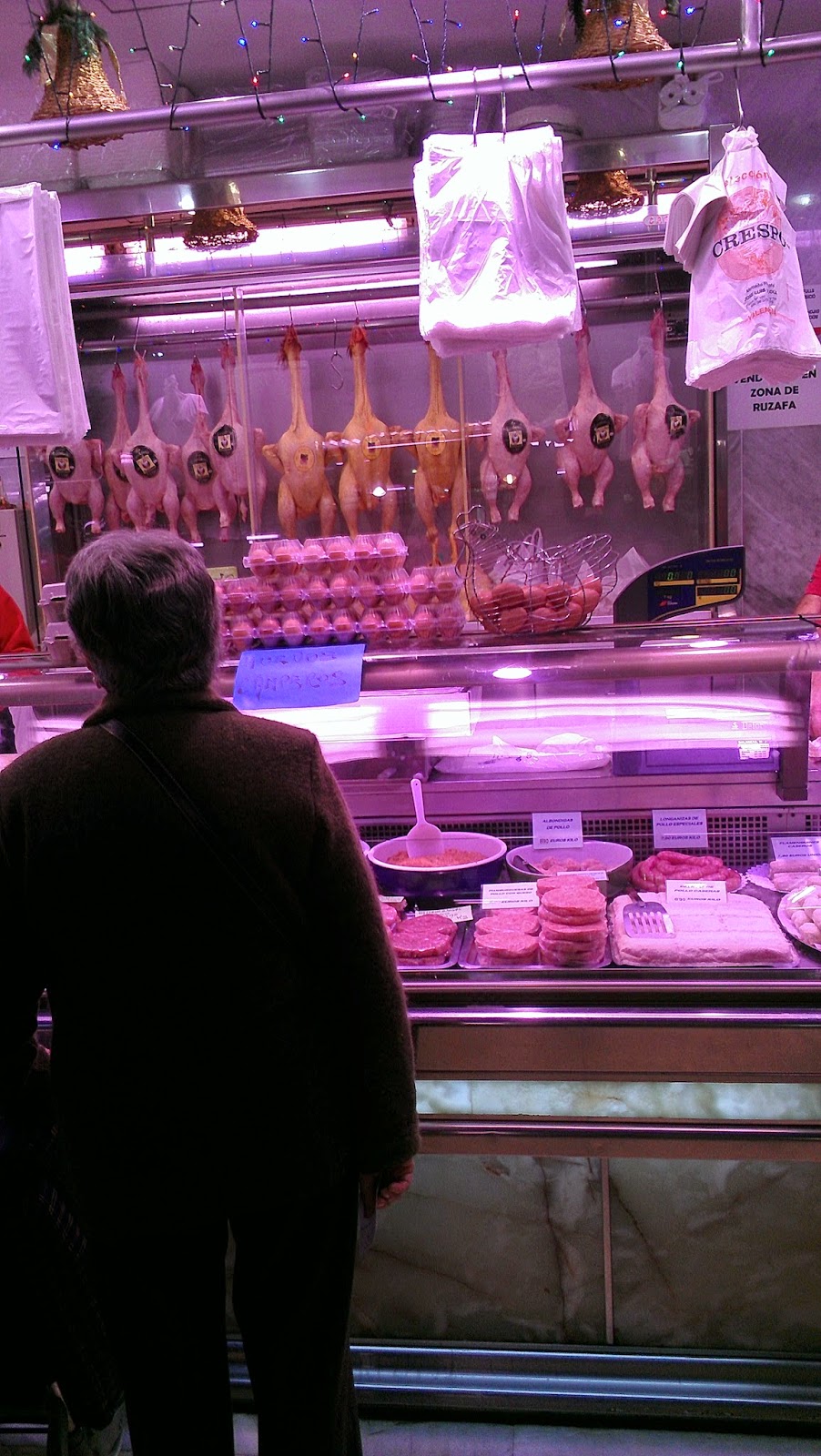

roasted pumpkins - you get to try before you buy

How to Do Valencia: Taste Authentic Argentinian Italian Pizza
I had no idea that there was a significant Italian community in Argentina, but I found out when I visited La Nonna - an Argentinian Italian restaurant in Valencia. The owners hail from Argentina, and the restaurant's menu boasts a mouth-watering selection of brick-oven Italian pizzas along with some Argentinian steak and meat dishes.
The pizzas are top notch - crispy but tender crust, fresh topping, and the gooiest of cheeses. La Nonna features a daily menu that allows you to select a salad or small plate as a first course, your choice of pizza, along with drink and a dessert for about 12euro.

Carpaccio de pulpo - La Nonna

Veggie pizza at La Nonna
La Nonna Calle Puerto Rico, 16 Valencia, Spain
How to Do Valencia: Hang with the Hipster Set at Calypso
We enter the smallish bar and order a couple of beers. As my eyes adjust to the darkness, I wonder not only where I am, but
when
. The music is a non-stop selection of 60s surfer and ska tunes .The DJ, who for some unexplicable reason is wearing a Mexcan luchador mask, seems thrilled to be providing the ambience for the evening. He bobs his head and does a little funky two step to the music. I scan the rest of the room, taking in the scene. The decor is best described as retro tiki chic. Overhead, a tiny tv is showing original versions of the Super Friends cartoon. I am the only one paying it any attention, however. The rest of the steadily swelling crowd at Calypso presents varying shades of hipster as they chat and sip their drinks. Skinny jeans, wallet chains, lumberjack shirts, carefully ungroomed beards, blunt-cut bangs, cat eye glasses, red-as-red-can-be lipstick... all the expected accoutrements are there. Well, all except one. There's a total lack of irony among the patrons, instead there's an easy, genuine feeling of 'hey, we're just here to have a good time, not to pose and look cute.' As I approach the bar for my second round, the bartender holds up a vintage camera and captures me with a flash. The luchador-DJ points and nods his approval.



Calypso Russafa Carlos Cervera, 9 Valencia, Spain
How to Do Valencia: Have Sunday Paella with a Valencian Nationalist
Guillermo invites me out to have
beers with him and his friend, Vicént. “He’s very nationalist,” Guillermo warns. I’m not sure I like the sound of that. “What exactly,” I cautiously begin, “do you mean by ‘nationalist’?” “Well, he only speaks Valenciano. When a Spanish team is playing a football match, he roots for the other team. When he tells people where he’s from, he doesn’t say I’m Spanish, he says, I’m Valencian. If he could, he’d prefer that his passport said that, but since he can’t change it, he’s stuck with it saying he’s from Spain. But don’t worry, he likes to practice his English.” Well, I think. This should be… fun. As it turns out, Guillermo was exaggerating a bit. Or, maybe Vicént was on his best behavior. Throughout the night we shift as easily between English, Castellano, and Valenciano (them, not me) as we do from 1 bar to the next. At the second bar, after Vicént explains to me over the loud music that he lives in a neighborhood not far from the beach, I jokingly quip, “Oh, so you’re going to make a paella for us tomorrow?” As Guillermo had hipped me earlier, paella is typically eaten by Valencians for Sunday lunch, often just before or after a relaxing stroll along the Mediterranean. To my surprise, Vicént replies with barely a pause, “Yes! You should both come over around 3!” Wait. What? Guillermo had already offered to show me to a restaurant serving authentic paella that would be much better and cheaper than the touristy options along the beach. But, this? This was more than I could have expected. I turned to share the change in plans to Guillermo. His face instantly registered his shock. “Wow. That was fast!” he says

Vicent prepares what he says is not truly paella, but octopus rice. Guillermo supervises, beer at the ready.

Shared salad to accompany the main course

Vicent's 'octopus rice'

"This right here? Is how you do pumpkin," says Vicent.

All smiles! An after-lunch coffee at the cafe on the corner
How to Do Valencia: Take a Stroll Through El Cabanyal
After lunch, Vicént offers to show us around El Cabanyal – the neighborhood he grew up in and the same neighborhood his family lived in for several generations. “It used to feel like a little village,” he says. Originally a working class neighborhood of fisherman and port workers, it’s now plagued by urban blight. Kids play in the street right across from the older boys hanging out in front of the corner store. The older ones don’t go inside to buy anything. They stay outside all day to sell.


Vicént stops at regular intervals to point out one crumbling, dilapidated building after another. “My grandmother was born there. We used to go pick up huge chunks of ice over there. My uncle’s house was here. My first job was washing cars in that place over there.” I can feel the mix of wistfulness and pride in his voice.


Guillermo and Vicént share that the state of the neighborhood is an intentional move on the part of the local government. They want to expand a nearby avenue so that it connects with the beach further to the south – El Cabanyal is right in the path of this proposed throughway.
We leave El Cabanyal and stroll along the beach, catch a batucada group practicing their moves, watch the sun set over the waves. After our walk, Guillermo and I bid Vicént thanks and goodbye, and catch the metro back home.


How to Do Valencia: Have a Farewell Dinner for a New Friend
My first night in Valencia, while Guillermo and I were grabbing some eats in a nearby Cuban restaurant, I met Tanya. Tany
a was a native of Brooklyn, and was currently living and teaching English in Madrid. We all chatted cordially, and I invited Tanya to join Guillermo and I for bar-hopping after dinner. Tanya shared that she’d only just decided to come to Valencia for the holiday weekend last night. She was an experienced solo traveler, and could easily enjoy exploring a city on her own or with newly made friends wherever she happened to find them. Of course, we hit it off instantly. We exchanged contact info at the end of the night and hung out again for several hours the next day.
On Tanya’s last night in Valencia, we met up for a Moroccan dinner at Restaurant Zakaria. I'd read online about one of their more popular dishes, Cordero con ciruelas (Lamb with prunes), and decided to order it. Tanya ordered a couscous dish and we shared. While both dishes were delicious, the lamb dish was certainly more memorable. Sweet, smoky caramelized onions, well-spiced lamb, and tender prunes made for a warm, comforting blend of flavors - perfect for the slightly chilly evening weather. Portions and prices were quite good at Restaurant Zakaria. A must-visit if you like North African cuisine.


Cordero con ciruelas at Restaurant Zakaria

Chicken and vegetable couscous at Restaurant Zakaria
Our after-dinner plan to find a bar or club with some cool tunes was mostly a bust and ended up with Tanya and me going on a Google search-inspired wild goose chase around the city center that lasted ‘til the wee hours of the morning. But, in the end, it was all good. We had just as much fun getting lost, people watching, laughing like giddy teenagers, and even singing the hooks of old funk and soul tunes on the streets of Valencia. Sometimes it’s not so much about where you’re going, but who you’re travelling with.

Tanya and I outside of Havana, the Cuban restaurant where we met in Valencia
Carrer de Puerto Rico, 26, Valencia, Spain
How to Do Valencia: Head Down the River to the City of Arts & Sciences
On my last day in Valencia, I head out to explore the ‘river’, which is what the locals call the continuous band of recreational green space that snakes through most of the city. Many decades ago, it was an actual river, but after repeated floods, it was drained and turned into a park. The weather is as perfect as it can be, and there are tons of people enjoying the day – running, strolling, biking, or just soaking up the sun.



At the south end of the river, I encounter the City of Arts and Sciences, a complex of museum buildings, each one dedicated to a specific area of scientific discovery and exploration. For the sake of time, I opt not to go inside of the museums. The buildings themselves are breathtaking works of art. The combination of futuristic architecture, glittering water features, and the shifting light of the sun makes for a unique visual feast. I take far too many pictures as I walk.







How to Do Valencia: Watch a Revolutionary Screening at Recordshop
When I return to Guillermo's, he asks if I’d be up for seeing a free documentary screening at a nearby bar this evening. “Sure. Which documentary?” I query. He shows me the flyer on his computer. I nearly squeal with excitement. Turns out it’s Wattstax. I’ve been wanting to see it for years, but have never gotten around to it. I’m thrilled to have the opportunity now. We head out a little while later to Recordshop, which is part bar, part ‘cultural association’ with lots of vinyl on display. The owner regularly screens films in the space that is about as big as a large living room. Before the movie, the owner plays Jimi Hendrix’s ‘Axis: Bold as Love’ album (on an actual record player), while Guillermo and I sip beers. Soon, the movie begins. I settle into a worn couch and immerse myself in the sounds of a soulful revolution.


Recordshop Cultural Association Calle Sevilla, 31 Valencia, Spain
How to Do Valencia: Savor Handcrafted Burgers at Slaughterhouse
For my last meal in Valencia, Guillermo and I head to Slaughterhouse, a popular burger restaurant that actually was a slaughterhouse in a previous incarnation. We’d walked past the place on my first night in town, and the smell wafting out onto the street had instantly grabbed my stomach by the nose. Online reviews and Guillermo's own personal recommendation confirmed that this place made some really tasty burgers, so I was glad to have a chance to sample one before heading home. Each of the burgers on the menu at Slaughterhouse gets its name from a fillm or book that is also listed as a recommendation on the menu. All the ingredients on the burgers are fresh and/or homemade, all the way down to the ketchup.I don't always eat burgers back in the States, but when I do, I want it to be a damned good burger. Here in Spain, I've tried burgers a few times, but they've always been 'off' somehow, falling short of my expectations for a well-prepared, proper tasting burger. Thankfully, I found redemption at Slaughterhouse. The Movska burger that I ordered was everything I'd been missing from home. By this time, I wasn't even surprised. After all, in just a few days in Valencia, I had already found so much that made feel right at home.

Slaughterhouse menu

The Movska burger at Slaughterhouse

A disco ball and a meathook - part of the eclectic decor at Slaughterhouse
SlaughterhouseCarrer de Dénia, 22Valencia, Spain
How I Got There: AVE High Speed Train (Spain Pass)
I'm a heavy user of Spain's discount railway pass for non-Spanish travelers. It's called Spain Pass, and I've used it several times to visit cities that are far enough away for me to want to avoid a bus ride (my bus limit is about 3 hours). The trip to Valencia from Ciudad Real took a little over 2 hours on the high-speed train. The same trip would by bus would take about 6 hours, and cost about the same.

Have you had a chance to visit Valencia yet? Share your favorite finds in the comments!
7 things you must see in every spanish city
1. Its cathedral
 |
| The Cathedral in Toledo |
 |
| Christopher Columbus' remains - inside Sevilla Cathedral |
| In Cordoba - the Cathedral is located inside of a mosque |
2. If it’s on a coast, its beach. If not, its Plaza Mayor
 |
| Waiting on fresh catch at a chiringuito at Malagueta beach |
 |
| Plaza Mayor in Ciudad Real at Christmas |
 |
| Picture-perfect view of Marbella's beach and Paseo Maritimo in winter |
3. Its most popular tapas bar or cervecería
 |
| Complimentary chupitos in Granada |
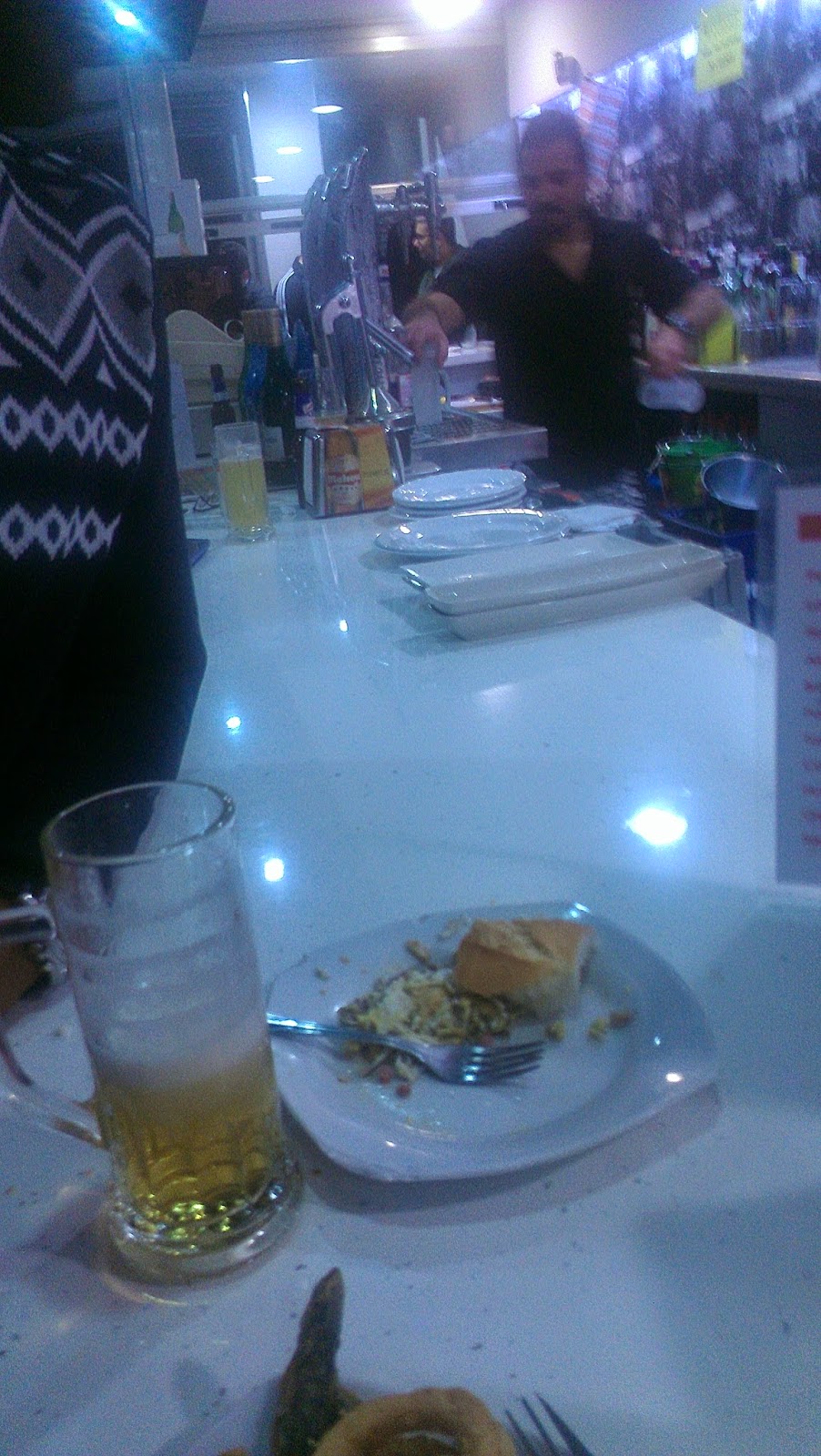 |
| Ciudad Real's El Alcazar - always crowded, always good. |
 |
| At Malaga's Antigua Casa de Guardia, the waiters chalk up your tab on the bar. |
4. Its ethnic neighborhood
 |
| At Baobab, a Senegalese restaurant in the Lavapies neighborhood of Madrid |
 |
| In Valencia's vibrant Ruzafa 'hood, new restaurants seem to pop up every day. |
 |
| At A Tu Bola, in Barcelona's Raval district, fusion albondigas are on the menu. |
5. Its municipal market
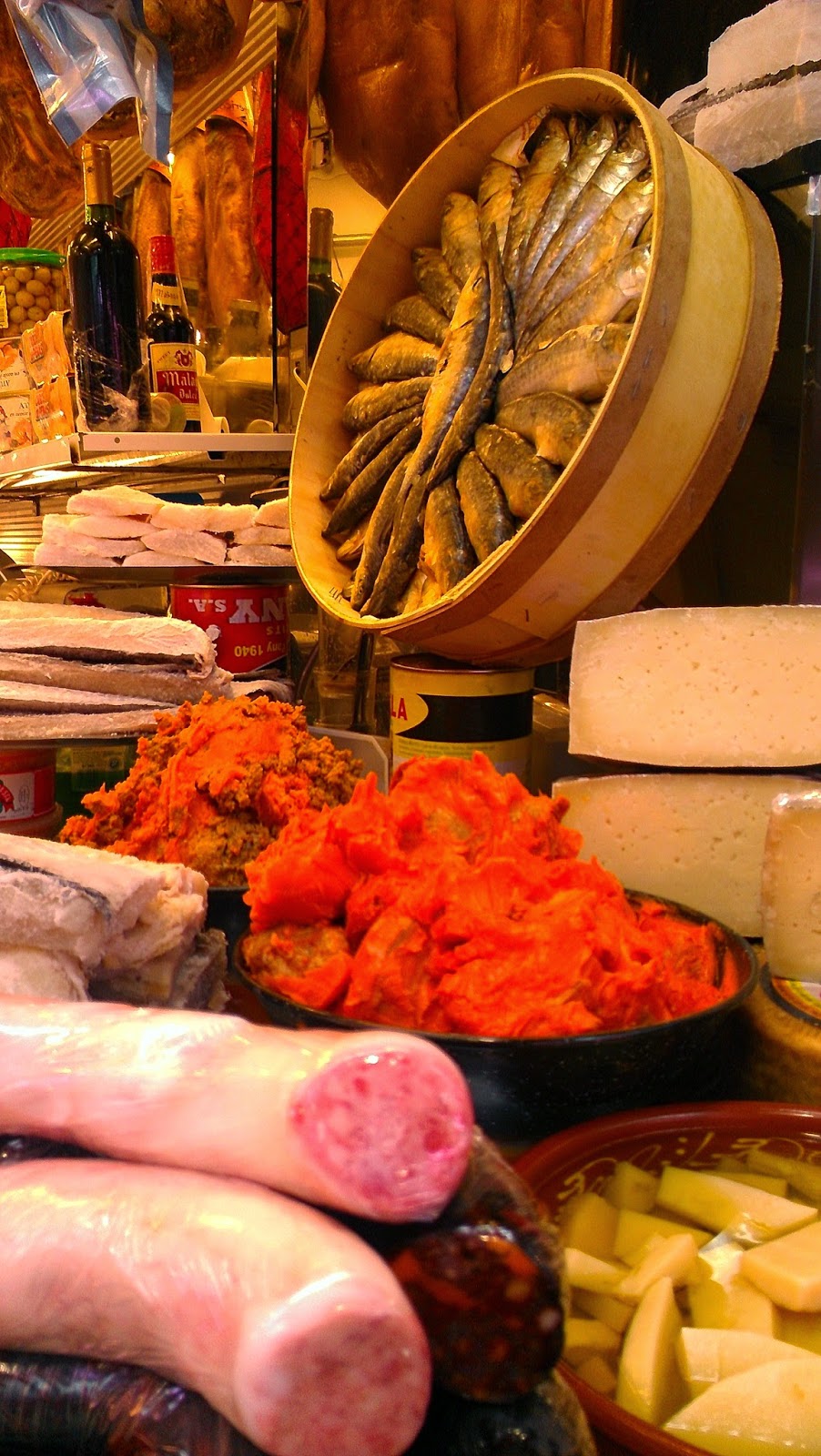 |
| Atarazanas Market, Malaga |
 |
| The central market in Cadiz is a bustling bar scene at night. |
6. Its Casco Antiguo
 |
| The most breathtaking views in Ronda are found in its old town |
 |
| Even in modern Marbella, there's a charming casco antiguo to get lost in. |
7. Its lesser known park
 |
| Ciudad Real's Parque del Pilar |
 |
| Jardin el Capricho - Madrid's other park |

















































